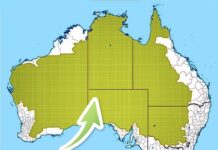1. Basque
In this unique, unlike anything European language, very ancient concepts have been preserved. For example, the word “knife” in it literally means “a stone that cuts”, and “ceiling” means “roof of a cave”. We are talking about the language that its speakers call Euskara, and we call the Basque language. It is a so-called isolated language: it does not belong to any of the known language families. Now it is spoken and written by approximately 700,000 people, mostly living on the coastal strip 50 kilometers wide from the Spanish city of Bilbao to the city of Bayonne in France. The Basque language is classified as an agglutinative language – this is how linguists call languages in which suffixes and prefixes are used to form new words, and each of them carries only one meaning. There are about half a million words in the Basque language dictionary – approximately the same as in our great and powerful one. This is explained by a large number of synonyms and dialect variants. The obscurity and complexity of the Basque language played a positive role: during the Second World War, it was used by US Army cipher radio operators.

2. Navajo
The idea to use complex languages to transmit encrypted messages came to the Americans back in the First World War: then the Choctaw Indians served in the US Army. In World War II, they took advantage of this experience. And in addition to the complex Basque language, they began to transmit messages in the Navajo language. Fortunately, there were enough native speakers of this most complex language, who also knew English, but there was no writing in the language, and therefore there were no dictionaries at all. “Windtalkers”, that is, “speaking with the wind,” as the Navajo ciphers called themselves, even had to invent new words that were previously absent in their language. For example, the plane was called “not-ahs-ya”, that is, “owl”, the submarine – “besh-lo”, literally – “iron fish”. And Navajo signalers called Hitler “posa-tai-wo”, that is, “crazy white man.” In addition to vowels and consonants, this language has four more tones – high, low, ascending and descending. Particularly complex in the Navajo language are verb forms, which consist of a stem, to which derivational and inflectional prefixes are added. The fascist himself will break his head!

3. Tabasaran
The number of languages spoken by the indigenous peoples of Dagestan cannot be accurately counted. We can only say that 14 of them have a written language. The most difficult of them and, according to the Guinness Book of Records, one of the most difficult in the world is Tabasaran. The language of the Lezgi branch of the Nakh-Dagestan family of languages holds the world record for the number of cases – they are distinguished from 44 to 52 in the Tabasaran language! It has 54 letters and 10 parts of speech, and there are no prepositions, but postpositions are used instead. So that life does not seem like honey to a student of the Tabasaran language, there are as many as three dialects in the language. But there are a lot of borrowings in the dictionary of Tabasarans. Near the Farsi language, the mountain dwellers borrowed ancient household, military and craft terminology. Tabasarans borrowed religious and scientific terms from Arabic. And the Russian language shared with the Tabasaran modern socio-political and scientific and technical vocabulary. Just don’t forget. that all these words change in more than 50 cases!

4. Eskimo
Do you know the word “igloo”, meaning the winter dwelling of the Eskimos, built of snow or ice blocks? Then congratulations: you know a word from the Eskimo language. It also rightfully takes its place of honor among the most difficult languages in the world: the Guinness Book of Records assures that it has 63 forms of the present tense, and simple nouns in it have 252 inflections. The term “inflection” in linguistics denotes different types of changes in words or roots. Let’s just correct the Guinness Book: modern linguists do not single out the Eskimo language. This, apparently, is about the entire Eskimo branch of the Eskimo-Aleut languages. But in the main registrar of world records is not mistaken: all Eskimo languages are extremely complex: for example, in one verb form with the help of suffixes, up to 12 grammatical categories can be expressed. Speakers of this language think figuratively: the word “Internet” in it is expressed by the term “ikiaqqivik”, which means “travel through layers.”

5. Chippewa
The champion of verb forms is, of course, the Chippewa language of the American Indians, or, as they are more commonly called, Ojibwe. Linguists refer to the Chippewa language as the southwestern dialect of Ojibway proper. So, in this Chippewa language – as many as 6 thousand verb forms! But even with all the complexities of this language, you, of course, know a couple of words from it: these are, for example, the words “wigwam” or “totem”. Based on the legends of the Ojibwe people, an epic poem by Henry Longfellow was written. The American classic used myths, toponyms and even words from the Ojibwe language, but, like any other person, he was not able to take into account everything. So the mistake is right on the cover: the legendary Ojibwe hero is called Nanobojo, because Hiawatha is a character from the mythology of the Iroquois.





























